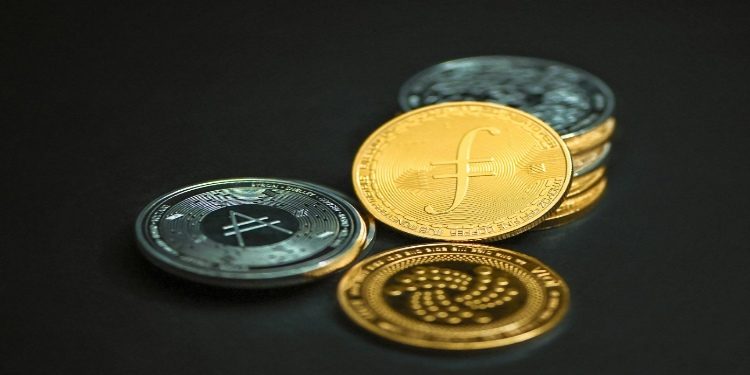Introduction
Stablecoins, a subset of cryptocurrencies, have garnered significant attention in recent years due to their ability to maintain a stable value, typically pegged to a fiat currency or a basket of assets. While stablecoins are commonly associated with trading and as a hedge against volatility in the cryptocurrency markets, their utility extends far beyond mere trading instruments. In this article, we delve into the various non-trading use cases of stablecoins, exploring how they are reshaping the landscape of finance and beyond. So, if you are a newbie in the world of investing, free education firms can help you by connecting you to one of many investment education firms out there so that you can learn more about investing.
Stablecoins in Remittances
Traditional remittance methods are plagued by high fees, long transaction times, and limited accessibility, especially for individuals in developing countries. Stablecoins offer a promising solution to these challenges by enabling fast, low-cost cross-border transactions. Leveraging blockchain technology, stablecoin transactions can bypass intermediaries, reducing costs and increasing efficiency. Initiatives like the Stellar network’s partnership with financial institutions in developing countries demonstrate the potential of stablecoins to revolutionize the remittance industry, providing a lifeline for millions of people worldwide.
Microtransactions and Everyday Payments
Conventional payment systems often struggle to facilitate microtransactions due to high fees and processing delays. Stablecoins addresses this issue by enabling seamless, near-instantaneous transactions at minimal costs. From buying a cup of coffee to paying for digital content online, stablecoins offer a viable alternative to traditional payment methods. Platforms like BitPay and Flexa are pioneering the integration of stablecoins into everyday commerce, making it easier for consumers and businesses to transact efficiently without the hassle of traditional banking systems.
Stablecoins for Financial Inclusion
Financial inclusion remains a pressing issue globally, with billions of people lacking access to basic financial services. Stablecoins have emerged as a powerful tool for promoting financial inclusion, particularly in regions with limited banking infrastructure. By providing a digital store of value that is accessible to anyone with a smartphone, stablecoins empower individuals to participate in the global economy, access credit, and build wealth. Projects like the Libra Association’s efforts to provide financial services to the unbanked underscore the transformative potential of stablecoins in bridging the gap between the banked and unbanked populations.
Smart Contracts and Decentralized Finance (DeFi)
Smart contracts, self-executing contracts with the terms of the agreement directly written into code, have paved the way for the rise of decentralized finance (DeFi). Stablecoins play a central role in DeFi applications, serving as the primary medium of exchange and store of value within decentralized ecosystems. Through platforms like MakerDAO, users can leverage stablecoins as collateral to borrow funds or earn interest through lending protocols. Moreover, decentralized exchanges (DEXs) like Uniswap and SushiSwap rely on stablecoins to facilitate trustless trading without the need for intermediaries.
Tokenizing Assets with Stablecoins
Asset tokenization, the process of representing real-world assets as digital tokens on a blockchain, offers new avenues for liquidity and investment opportunities. Stablecoins serve as the ideal medium for tokenizing assets, providing stability and interoperability across different blockchain platforms. Whether it’s real estate, precious metals, or fine art, stablecoins enable fractional ownership and instant transferability of assets, unlocking liquidity and democratizing access to traditionally illiquid markets. Projects like tZERO are pioneering the tokenization of securities using stablecoins, offering investors a more efficient and transparent way to trade assets.
Future Potential and Challenges
Looking ahead, the future of stablecoins appears promising, with continued innovation and adoption across various industries. However, regulatory uncertainty and concerns surrounding stablecoin issuers’ reserves pose significant challenges to widespread adoption. Regulators are grappling with how to classify stablecoins and ensure they comply with existing financial regulations, particularly regarding anti-money laundering (AML) and know-your-customer (KYC) requirements. Nevertheless, as technology evolves and market demand grows, stablecoins are poised to play a pivotal role in reshaping the future of finance, fostering greater financial inclusion and innovation on a global scale.
Conclusion
In conclusion, stablecoins represent a paradigm shift in the way we think about value transfer and financial infrastructure. Beyond their utility as trading instruments, stablecoins offer a multitude of use cases that have the potential to revolutionize industries ranging from remittances to decentralized finance. As the ecosystem matures and regulatory frameworks evolve, stablecoins are poised to unleash a wave of innovation, driving greater efficiency, accessibility, and inclusivity in the global economy.
David Prior
David Prior is the editor of Today News, responsible for the overall editorial strategy. He is an NCTJ-qualified journalist with over 20 years’ experience, and is also editor of the award-winning hyperlocal news title Altrincham Today. His LinkedIn profile is here.













































































